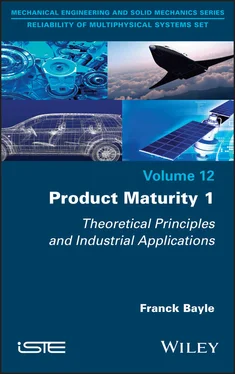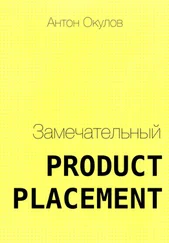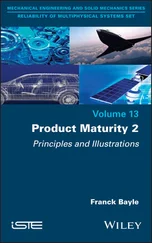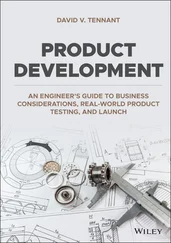7 Chapter 7Figure 7.1. Burn-in test effect on product reliability Figure 7.2. HALT/HASS testing principle Figure 7.3. Characteristics of POS1 tests Figure 7.4. Comparison between service life and putting into service duration on...Figure 7.5. Overview diagram of the POS2 test Figure 7.6. Probability to detect at least one failure influenced by Q Figure 7.7. Probability to detect at least one failure influenced by p Figure 7.8. Example of cost optimization taking burn-in into account Figure 7.9. Example of burn-in cycle according to HALT/HASS method Figure 7.10. Illustration of the stages of the HALT/HASS method. For a color ver...Figure 7.11. Overview diagram of decision-making Figure 7.12. Lower bound of the number of defective products Figure 7.13. Possible scenarios for the distribution of products with or without...Figure 7.14. Cost of manufacturing process depending on time Figure 7.15. Cost of manufacturing process depending on time – example 1 Figure 7.16. Cost of the manufacturing process depending on time – example 2 Figure 7.17. Cost of manufacturing process depending on time – example 3
8 Chapter 8Figure 8.1. Run-in of a car engine. For a color version of this figure, see www....Figure 8.2. Example of concave degradation Figure 8.3. Drift after 100 hours stabilization Figure 8.4. Run-in principle. For a color version of this figure, see www.iste.c...Figure 8.5. Example of degradation with two different levels of physical contrib...Figure 8.6. Descending level of physical contribution. For a color version of th...Figure 8.7. Illustration of Sedyakin’s principle for a descending level. For a c...Figure 8.8. Example of the effect of temperature for the drift of a performance....Figure 8.9. Principle of the choice of the drift model Figure 8.10. Power law drift with temperature change. For a color version of thi...Figure 8.11. Power law drift with change of temperature with optimum stabilizati...Figure 8.12. Illustration of the prediction interval of a linear regression
1 Chapter 3Table 3.1. Power dissipated by each type of resistor Table 3.2. Voltage depending on the type of resistor Table 3.3. Summary of derating rules according to the literature Table 3.4. Activation energy for various types of components Table 3.5. Temperature derating rate Table 3.6. Summary of derating rules
2 Chapter 4Table 4.1. List of components with limited service life Table 4.2. Service life of batteries according to the FIDES guide Table 4.3. Endurance parameter of a wet electrolytic capacitor Table 4.4. Black model for optocouplers Table 4.5. Service life of batteries according to MDPI Table 4.6. Service life of lithium batteries according to MDPI Table 4.7. Service life of various types of fans (TITAN) Table 4.8. Activation energy of fans according to FIDES Table 4.9. Service life of a flash memory Table 4.10. Example of limited service life of a trimmer Table 4.11. Example of limited service life of a rotary potentiometer Table 4.12. Aging specifications of a quartz oscillator Table 4.13. Aging parameters of a voltage reference Table 4.14. Summary of components assumed to have limited service life
3 Chapter 5Table 5.1. Example of simulation for the uniform law (on the left) and for the n...
4 Chapter 7Table 7.1. Processing of the results of POS1 tests. For a color version of this ...Table 7.2. Example of life profile for POS1 test Table 7.3. Possible scenarios during POS2 testing. For a color version of this t...
5 Chapter 8Table 8.1. Example of calculation of equivalent temperature
1 Cover
2 Table of Contents
3 Title Page
4 Copyright
5 Foreword by Laurent Denis
6 Foreword by Serge Zaninotti
7 Acknowledgements
8 Introduction
9 Begin Reading
10 List of Notations
11 List of Definitions
12 List of Acronyms
13 References
14 Index
15 End User License Agreement
1 v
2 iii
3 iv
4 ix
5 x
6 xi
7 xiii
8 xiv
9 xv
10 xvii
11 xviii
12 1
13 2
14 3
15 4
16 5
17 6
18 7
19 8
20 9
21 11
22 12
23 13
24 14
25 15
26 16
27 17
28 18
29 19
30 20
31 21
32 22
33 23
34 24
35 25
36 26
37 27
38 28
39 29
40 30
41 31
42 33
43 34
44 35
45 36
46 37
47 38
48 39
49 40
50 41
51 42
52 43
53 44
54 45
55 46
56 47
57 48
58 49
59 50
60 51
61 52
62 53
63 54
64 55
65 56
66 57
67 58
68 59
69 61
70 62
71 63
72 64
73 65
74 66
75 67
76 68
77 69
78 70
79 71
80 72
81 73
82 74
83 75
84 76
85 77
86 78
87 79
88 80
89 81
90 82
91 83
92 85
93 86
94 87
95 88
96 89
97 90
98 91
99 92
100 93
101 95
102 96
103 97
104 98
105 99
106 100
107 101
108 102
109 103
110 104
111 105
112 106
113 107
114 108
115 109
116 110
117 111
118 112
119 113
120 114
121 115
122 117
123 118
124 119
125 120
126 121
127 122
128 123
129 124
130 125
131 126
132 127
133 128
134 129
135 130
136 131
137 132
138 133
139 134
140 135
141 136
142 137
143 138
144 139
145 140
146 141
147 142
148 143
149 144
150 145
151 146
152 147
153 148
154 149
155 150
156 151
157 152
158 153
159 154
160 155
161 156
162 157
163 158
164 159
165 160
166 161
167 162
168 163
169 164
170 165
171 166
172 167
173 168
174 169
175 171
176 172
177 173
178 174
179 175
180 176
181 177
182 179
183 180
184 181
185 183
186 184
187 185
188 187
189 188
190 189
191 190
192 191
193 192
194 193
195 194
196 195
197 196
198 197
Reliability of Multiphysical Systems Set
coordinated by
Abdelkhalak El Hami
Volume 12
Product Maturity 1
Theoretical Principles and Industrial Applications
Franck Bayle

First published 2022 in Great Britain and the United States by ISTE Ltd and John Wiley & Sons, Inc.
Apart from any fair dealing for the purposes of research or private study, or criticism or review, as permitted under the Copyright, Designs and Patents Act 1988, this publication may only be reproduced, stored or transmitted, in any form or by any means, with the prior permission in writing of the publishers, or in the case of reprographic reproduction in accordance with the terms and licenses issued by the CLA. Enquiries concerning reproduction outside these terms should be sent to the publishers at the undermentioned address:
Читать дальше













